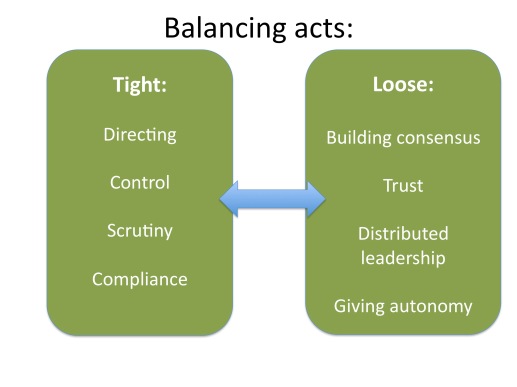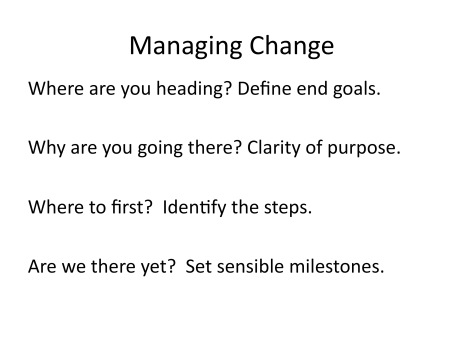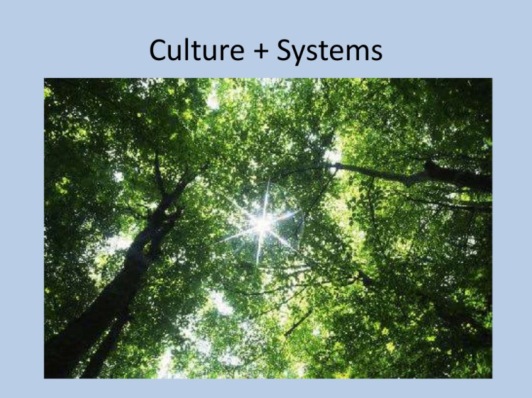Last week I was asked to lead a workshop on leadership for some middle and senior leaders. Here are some of the ideas I shared. Believe me, I’m not preaching from on high. I’ve had some successes but there isn’t a day that goes by when I don’t run through some kind of imagined re-run of my last job where I managed to do things differently; did different things; did things better.
For what they are worth, here are my thoughts:

These are the areas I think school leaders need to work on. There’s an interplay between vision and ethos – the direction of travel and the spirit in which things are done. There’s also the importance of strategy – the need to solve difficult problems and plan a way forward. Managing people and communicating well with all stakeholders are areas that need constant investment. In my experience, it’s rare to find a leader who excels in all these areas, which is why we have teams!

Leaders need to get stuck into the details of what makes schools work; there are some important technical areas that need real expertise – areas that can be controlled with good systems and evidence-informed strategies. It’s a mistake, for example, to get carried away with your ideals for a trust-based ethos if the QA isn’t there as a back-stop. There’s a place for being ruthless… I wish I’d done a bit more of it – but, more importantly, there’s a need for no-nonsense reinforcement of your expectations of people. Autonomy has to be earned by delivering the goods.
I don’t think enough leaders really understand curriculum and assessment in the detail to the point that they drive improvement at this level; it’s left to others. But again, it can be about getting the right people in. It’s a mistake to rely on your own expertise if you genuinely don’t have it.
The chances are you’re going to need help. In my experience, there are issues with policy borrowing from successful schools unless the context is very similar. It is also rare to find local authority advisors who really know about these things; it’s people who are doing it in practice or with very recent experience that you trust. Ideally you want people in-house; I can see why MATS are increasingly looking to recruit experts to drive specialist agendas – we can’t know or do it all ourselves but you want people who are close to the action and part of your organisation.

There is a lot of research into effective leadership. One of the 10 strong claims about effective leadership from NSCL’s literature review in 2010 – link above – is that effective leaders typically do the same things – as shown in the diagram. This rings true. It’s a good read – especially the section on phasing the journey from tight to loose.

Following from the NSCL document, this slide highlights what can seem like a dichotomy. Really these are different modes of leadership that need to be applied to different aspects of a school depending on how well things are going; they can also apply at different times. Early on in a change cycle, you might need more compliance and control but ultimately, you need more distribution with leadership happening at every level to deliver success. Things can go wrong if you are too tight or too loose at the wrong time or place.

This is a popular post on my blog. It’s worth reading and considering. If systems don’t work to support teachers in their work, then students don’t thrive. This is really important when looking at data systems for example. Who is the data for? Who needs it? Who is the appraisal meeting for? Who is the CPD session for? Great schools are made up of great classrooms; that’s where the action is…. But teacher-centred thinking also needs guidance, quality assurance and so on; it’s not all hugs.

The linked blog explains this in detail. Everyone in an organisation is an individual with their own personal agenda. Strong alignment to a set of goals is regarded as a key element in success. You can create alignment through God-like hero-Head awe-inspiring greatness (ahem…); well planned consensus building, through imposing a strong compliance field or by nudging and reinforcing day by day – or a combination of all of these. The point is that if you neglect the field, people drift off in their own directions. This is natural; they’re not trying to be subversive – you just need to keep the field strong so that they don’t drift too far.

The jungle clearing analogy. Managers have the ability to get everyone moving, sticking together for safety reasons and deploying the tools to hack through the undergrowth; Leaders have the ability to decide which way to go and to persuade everyone to follow them, even if they are uncertain about lies ahead. I once had an interesting chat with a middle leader who thought he could do his leading on a Wednesday afternoon but do his managing the rest of the week. He’d rather missed the point. However, the truth is that you need both dimensions; lofty leadership without well-grounded implementation is as bad as functionally efficient management without direction or purpose.

If you need to engineer significant organisational change, these four steps are useful. Where and why are critical. And everyone is going to want to have their say about these things in the community. But the steps to take? People will look to you for that. And they’ll be impatient. Milestones are really useful for managing expectations and building confidence around small gains on the road to bigger transformation. I’ve been guilty of biting off more than I can chew leading to a slightly too fuzzy sense of the end goals and then not marking the milestones clearly enough.

No pain, no gain. Cliche klaxon. But it’s true. You need to be able to sell a vision for what is possible so that people have enough faith to wade through the choppy waters of change. Ideally you want the depth and length of the change phase mess to be short and shallow but realistic time frames are essential, as is a strongly motivating vision for the end goal that makes it all worthwhile once you get there.

My message here is that being optimistic is important. Glass half-full! But, also it doesn’t pay to overdo it. I’ve found that people don’t trust overly breezy positivism – just as much as they react against doom-mongering. I found myself flipping between these two states all too often with different audiences. Yes, there are challenges but also, yes, things are improving.. Don’t over-egg it in either direction.

This idea applies to lots of situations: Data management, behaviour systems, performance review and appraisal, CPD…. You can’t just project strong a ethos and have good intentions, hoping for things to happen in practice; you can’t design robust systems and expect everyone to deliver them in the spirit you intended – unless you make this explicit. If you want to build a certain culture in a team or amongst students, you need the intent but also the mechanisms for generating it and making it stick.

This classic change management grid – via Tim Brighouse via Vic Goddard – tells the story of success and failure in lots of situations. It pays to study it often. . If you do a ‘pre-mortem’ on a given set of ideas, imagining that your initiative ends up a failure, can you identity the cause? Can you then address the shortfalls to turn possible failure into success: Clarity of vision? Time invested in training people to have the skills? A well-staged action plan? Time resources? And so on…
So much to think about! Next time I’ll do better…. Good luck with whatever journey you are on.
Here are the slides in a powerpoint if you want them: Leadership in 12 slides

Thank you. I have my first AHT interview on Monday and this helps get some of my thoughts in order.
LikeLiked by 1 person
Good luck. Culture and systems is useful for that. eg culture of high expectations… and this is how…; culture embracing evidence-informed professional learning.. and this is how. Backed with some examples of things you’ve done.
LikeLike
Tom
A great summary. I believe leadership is a slippery bugger, having studied and practised the slippery bugger in industry and then in education. You clearly have a passion and talent for leadership, and I am sure you will agree that there is a plethora of evidence out there.
I will lay my stall out immediately, I see teaching as a professional personal service carried out by skilled craftsmen. I believe that no amount of evidence based upon populations will do anything else than inform policy at the highest levels. Don’t get me wrong, I spend an hour each day checking out tweets and blogs of people I disagree with to find links to research evidence that I might find useful to me personally, but I believe that all of that evidence has to be tempered with experience and artistic insight for the individual learning when resources and time allow.
I say all of the because I would ask about your experience and knowledge of leadership which are clearly extensive. I have read the NCSL research document and a good deal of it comes from reflection on successes and failures of existing and previous senior leaders. I disagree that the headteacher is the most important source of leadership in a professional service environment. I see a school in the same way as I see a gang of computer professionals and I see the tight loose thing tries to get to grips with the fact that the expertise is often at the bottom not the top of the organisation.
I feel that the headteacher/Principal should concern themselves with long term strategy as described by Mintzberg all those years ago. Management should be left to those further down the tree. I see many of the issues arising from your second slide in which having decided that the head’s job is vision and mission, they will then try to control and micro manage where they should not be sticking their oar in.
To this end I would like to see more leaders in education from outside of education. I work in a school in which we have faculty and administrators, it’s an American school. I think this goes a bit too far the other way but such is life. Most schools are like medium sized business with staff in the hundreds and students in the high hundreds to low thousands and of course students are the customers (at least the most important stakeholder).
I have a “feeling” and it is little more than this that the free school / academy movement deals with this particular issue. Some schools have 30 staff, some have 300. There is not one model that will work for all and in fact I feel that there are a good many models that would be successful. I feel that bringing in external leadership is the key to re-engineering the processes of education using 21st century technology.
Have you any view whatsoever on whether there is a sense that there may need to be a revolution rather than an evolution. Considering the political, social and economic global environment, do you think that we can continue tinker with that which we have?
We need to think outside the box, and we can’t produce slides for that.
Any thoughts.
LikeLike
[…] School leadership in 12 slides, by Tom […]
LikeLike
A really useful piece. Thanks for sharing.
LikeLiked by 1 person
Enjoyed reading this, Tom.
I used the NCSL’s ’10 Strong Claims’ document to structure a week’s worth of sessions with primary and secondary headteachers (3 groups, one each year) in Trinidad and Tobago and found it hugely useful. Reinforced how much these ideas about strong leadership cross international and cultural boundaries!
Hope all is going well for you. Any progress re: the doctorate plan?
LikeLike
[…] https://teacherhead.com/2017/05/12/school-leadership-in-12-slides/ […]
LikeLike
Hi Tom,
Great post! I am just beginning a Teacher Leadership program and have been tasked to come up with a definition of teacher leadership-this really gave me a lot to consider and really gave me some direction. It also really got me thinking about my school’s professional development program and formative assessment and how the role of teacher leader fits into the school as a whole. As a teacher leader candidate this is exactly what I should be doing-thinking about this role and how it fits into all aspects of the school, I feel as if those in leadership positions aren’t always in touch with what is going on at every level of the school, but a teacher leader must be. Thank you for giving me so much to think about. I can’t wait to share this post with my class of teacher leader candidates tomorrow!
Lynn
LikeLiked by 1 person
Good advice on leading change! Just went through a lot of research in which today’s leadership needs to be seen as paradoxical…leaders needing many qualities which may sometimes contradict one another in order to successfully lead change.
LikeLike
[…] Sherrington is always worth reading and rightly influential in the wider educational debate. His School Leadership in 12 Slides post summarised the important features of top level functions in schools wonderfully for me, and […]
LikeLike
[…] School Leadership in 12 slides. […]
LikeLike
What a great summary – Thanks for posting!
LikeLiked by 1 person
Thanks. Will digest fully another time.
LikeLike
Thank you for sharing this important stuff. I will definitely use few of these points to bring some change in our educational environment. Really helpful!!
LikeLiked by 2 people
As a middle leader, I thought I was perfectly set to make the next step into SLT and honestly, assumed I had the right to do so because of my experience and length of time in the classroom. This has been a fantastic read for me – it shows that leadership isn’t just a ‘next step’ but takes real attention to detail.
I’ve learned a lot here – thanks for sharing.
LikeLiked by 1 person
Very insightful…..great help to me
LikeLike